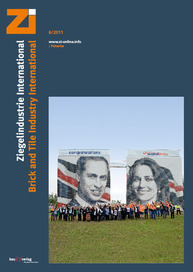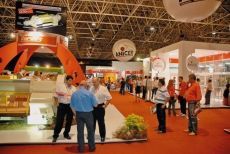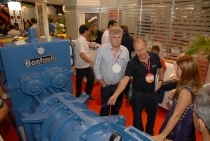40th National Meeting of Brazil‘s red ceramic industry expecting 3 000 entrepreneurs
The event will include technology workshops, where experts can delve into topics of interest to the ceramic sector, and forums for discussing strategic issues pertinent to the segment‘s performance, as analysed by specialists from Brazil and Europe. The topics of discussion at the workshops will cover such aspects as the technology of ceramic production, energy efficiency in factories, and innovation in general. Already in the forums, entrepreneurs will know the life cycle analysis applied to ceramic products and the benefits it can bring to all sector.
The 14th Expoanicer-Exhibition of Machinery, Equipment, Products, Services and Supplies for the Red Ceramic Industry will be held in parallel and feature all the latest technology for ceramic enterprises.
At last year‘s edition in Florianópolis, 2 700 Expoanicer-goers participated in the technology workshops, forums and tours of factories in the region. In the course of the event, business transactions totalling more than $ 32 million were concluded. This year, the organizers are expecting an audience of 3 000, along with a 10% increase in transaction volume.
As one of the event‘s highlights, there will be a tour to two ceramic factories in the region, where visitors can get first-hand information about the production processes and employed technologies. This year‘s entourage will visit Argil company, a masonry brick factory, and Telhafort, a producer of Roman and Portuguese roof tiles.
With attention to sustainability, Anicer will neutralize the national meeting‘s “carbon footprint”. The total amount of CO2 emitted in connection with the event will be calculated and then offset by compensatory afforestation, measures of public interest.
According to the Brazilian Institute of Geography and Statistics (IBGE), the country‘s red ceramic industry comprises 7 431 companies, including small and micro-scale enterprises. Together, they account for more than 90% of all new walls and roofs in the country. The corresponding annual revenues add up to $ 18 billion.






